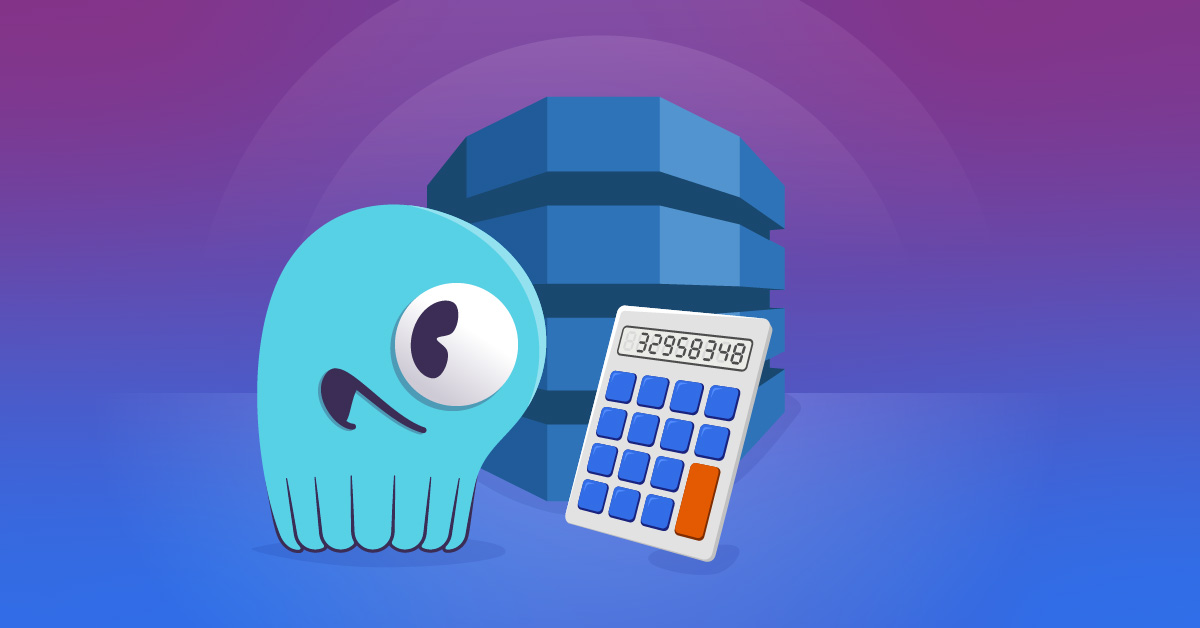Blowing Up Your DynamoDB Bill
Why real-world DynamoDB usage scenarios often lead to unexpected expenses
In my last post on DynamoDB costs, I covered how unpredictable workloads lead to unpredictable costs in DynamoDB.
Now let’s go deeper. Once you’ve understood the basics, like the nutty 7.5x inflation of on-demand compared to reserved, or the excessive costs around item size, replication and caching … you’ll realize that DynamoDB costs aren’t just about read/write volume – it’s a lot more nuanced in the real-world.
Round ‘em up!
A million writes per second at 100 bytes isn’t in the same galaxy as a million writes at 5KB. Why? Because DynamoDB meters out the costs in rounded-up 1KB chunks for writes (and 4KB for reads). Writing a 1.2KB item? You’re billed for 2KB. Reading a 4.5KB item with strong consistency? You get charged for 8KB. You’re not just paying for what you use, you’re paying for rounding up. Remember this character in Superman III taking ½ a cent from each paycheck? It’s the same deal (and yes, $85,789.90 was a lot of money in 1983) …

Wasted capacity is unavoidable at scale, but it becomes very real, very fast when you cross that boundary on every single operation. And don’t forget that hard cap of 400KB per item. That’s not a pricing issue directly, but it’s something that has motivated DynamoDB customers to look at alternatives.
Our DynamoDB cost calculator lets you model all of this. What it doesn’t account for are some of the real-world landmines – like the fact that a conflict resolved write (such as concurrent updates in multiple regions) still costs you for each attempt, even if only the last write wins. Or when you build your own TTL expiration logic, maybe pulling a bunch of items in a scan, checking timestamps in app code, or issuing deletes. All that data transfer and (replicated) write/delete activity adds up fast … even though you’re trying to “clean up.” We discussed these tricky situations in detail in a recent DynamoDB costs webinar, which you can now watch on-demand.
Global tables are a global pain
So you want low latency for users worldwide? Global tables are the easiest way to do that. Some might even say that it’s “batteries-included.” But those batteries come with a huge price tag.
Every write gets duplicated across additional regions. Write a 3.5KB item and replicate it to 4 regions? Now you’re paying for 4 x 4KB (rounded up, of course). Don’t forget to tack on inter-region network transfer. That’s another hit at premium pricing. And sorry, you cannot reserve those replicated writes either.
You’re paying for that speed, several times over, and the bill scales linearly with your regional growth.
It gets worse when multiple regions write to the same item concurrently. DynamoDB resolves the conflict (last write wins) but you still pay for every attempt. Losing writes? Still charged.
Our cost calculator lets you model all this. We use conservative prices for US-East, but the more exotic the region, the more likely the costs will be higher. As an Australian, I feel your pain.
So have a think about that batteries-included global tables replication cost, and please remember, it’s per table!
DAX caching with a catch
Now do you want even tighter read latency, especially for your latency-sensitive P99? DynamoDB Accelerator (DAX) helps, but it adds overhead, both operational and financial. Clusters need to be sized right, hit ratios tuned, and failover cases handled in your application. Miss the cache, pay for the read. Fail to update the cache, risk stale data.
Even after you have tuned it, it’s not free. DAX instances are billed by the hour, at a flat rate, and once again, without reserved instance options like you might be accustomed to.
Our DynamoDB cost calculator lets you simulate cache hit ratios, data set sizes, instance types and nodes. It won’t predict cache efficiency, but it will help you catch those cache gotchas.
Multi-million-dollar recommendation engine
A large streaming service built a global recommendation engine with DynamoDB. Daily batch jobs generate fresh recommendations and write them to a 1PB single table, replicated across 6 regions.
They optimized for latency and local writes. The cost? Every write to the base table plus 5 replicated writes. Every user interaction triggered a write (watch history, feedback, preferences). And thanks to that daily refresh cycle, they were rewriting the table – whether or not anything changed.
They used provision capacity, scaling up for anticipated traffic spikes, but still struggled with latency. Cache hit rates were too low to make Redis or DAX cost-effective.
The result? Base workload alone cost tens of millions per year, and the total doubled after accommodating peaks in traffic spikes and batch load processes.
For many teams, that’s more than the revenue of the product itself! So, they turned to ScyllaDB.
After they switched to our pricing model based on provisioned capacity (not per-operation billing), ScyllaDB was able to significantly compress their data stored, while also improving network compression between AZs and regions. They had the freedom to do this on any cloud (or even on-premise). They slashed their costs, improved performance, and removed the need to overprovision for spikes. Daily batch jobs run faster and their business continues to scale without their database bill doing the same.
Another case of caching to survive
An adtech company using DynamoDB ran into cache complexity the hard way. They deployed 48 DAX nodes across 4 regions to hit their P99 latency targets. Each node is tailored to that region’s workload (after a lot of trial and error).
Their writes (246 bytes/item) were wasting 75% of the write unit billed. Their analytics workload tanked live traffic during spikes. And perhaps worst of all, auto-scaling triggers just weren’t fast enough, resulting in request throttling and application failures.
The total DynamoDB and DAX cost was hundreds of thousands per year.
ScyllaDB offered a much simpler solution. Built-in row caching used instance memory at no extra cost with no external caching layer to maintain. They also ran their analytics and OLTP workloads side by side using workload prioritization with no hit to performance.
Even better, their TTL-based session expiration was handled automatically without extra read/delete logic. Cost and complexity dropped, and they’re now a happy customer.
Watch the DynamoDB costs video
If you missed the webinar, be sure to check out the DynamoDB costs video – especially where Guilherme covers all these real-world workloads in detail. Key takeaways:
- DynamoDB costs are non-linear and shaped by usage patterns, not just throughput.
- Global tables, item size, conflict resolution, cache warmup and more can turn “reasonable” usage into a 7-figure nightmare.
- DAX and auto-scaling aren’t magic; they need tuning and still cost significant money to get right.
- Our DynamoDB cost calculator helps model these hidden costs and compare different setups, even if you’re not using ScyllaDB.
And finally, if you’re a team with unpredictable costs and performance using DynamoDB, make the switch to ScyllaDB and enjoy the benefits of predictable pricing, built-in efficiency and more control over your database architecture. If you want to discuss the nuances of your specific use case and get your technical questions answered, chat with us here.
